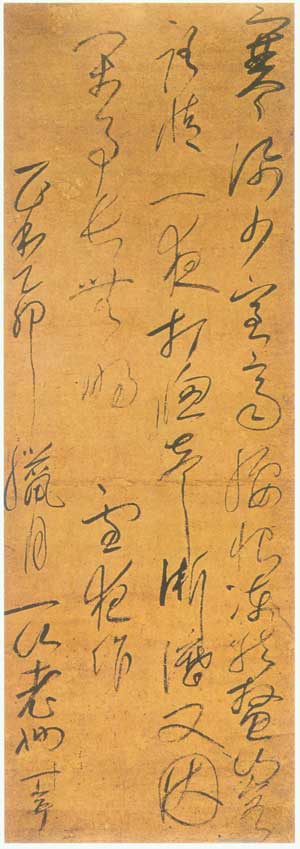Yishan Yining (1247-1317) was born in Taizhou (Linhai County, Zhejiang Province), with the common surname Hu. No. 1 mountain. He grew up in Buddhism and studied the teachings of Tiantai and Vinaya. An eminent monk of the Linji Sect. He has been extremely alert since he was a child. When he was a little older, he was introduced by his uncle Lingjiang to the Hongfu Temple in Tiantai Mountain where he studied under Wude Huirong and learned the Zen method of Linji Sect's Mahahui Dharma lineage. He also entered Siming Puguang Temple, studied the Lotus Sutra humbly from the place of divine enlightenment, and received the Tiantai teachings. Because they suspected "the fragmentation of righteousness", after going to Tiantong Temple and Asoka Temple, Zen masters such as Jian Wengjujing, Huanxi Weiyi, Zangsou Shanzhen, Dongsou Yuankai, Jichuang Youzhao, Hengchuan Rugon and other Zen masters participated in Zen. Finally, I went to Putuo Mountain and obtained the Dharma at Nianjixingmi. The method of Cao Yuan School in the Sihuqiu legal system. In the 21st year of Yuan Dynasty (1284), he became the master of Zuyin Temple in Changguo. In the thirty-first year of the Yuan Dynasty (1294), Yuxi Ruzhi recommended him as the abbot of Putuo Temple. He was pure and self-restrained, and was respected by Taoism and customs.
In the third year of Dade (1299), Chengzong bestowed Yining with a golden cassock and the title of "Master Miaoci Hongji". He was appointed as the "Buddhist President of Jiangsu and Zhejiang" and sent to Japan as envoy. Lived in Kenchoji Temple, Enkakuji Temple in Kamakura and Nanzenji Temple in Kyoto. Living in Japan for twenty years, he created a large number of influential talents in the Japanese Buddhist community, and also had a great influence on Japanese literature, calligraphy, and painting. After 1313, Emperor Udo called him to preside over Nanzen Temple in Kyoto. He passed away in Japan in 1317, and left a posthumous note to Emperor Go Uta, leaving behind the verses "Throughout this life, the Buddha's Qi, the arrow leaves the string, and falls to the ground in the void", which then disappeared. After Yi Ning's death, Emperor Houyuduo gave him the posthumous title of "Yishan Guoshi Master Miaoci Hongji", referred to as "Yishan Guoshi".

Worked on Snowy Night, on paper, vertical scroll, 89.4cm in length and 30.3cm in width. Cursive script, collected by Kenninji Temple, Kyoto, Japan.
This cursive scroll was made in December of the fourth year of Zhenghe (1315), when Yining was sixty-nine years old. This cursive calligraphy, which was much talked about by tea drinkers during the Edo period in Japan, reminds people of the story of Hui Ke asking Bodhidharma for Zen teachings and great enlightenment on a snowy night. Express the rhythm of cursive writing vividly.








